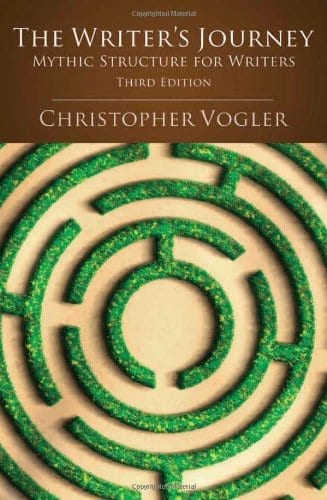Whether your story starts en medias res or with a loving description of the how the universe began, it has to start somewhere.
Many Western stories follow the Hero’s Journey as described by Joseph Campbell. For the purposes of learning and practicing story structure, this is the model I’ll be using – at least in the beginning.

In the beginning…
Introduces main conflict of the story. As my ever-zen writing workshop instructor Charlie used to say, “What’s the what of this story?”
External Conflict – something threatens the Main Character (MC)’s State of Perfection (SOP)
Internal Conflict – MC is emotionally stuck. They have a deep fear, limiting belief, or conflicting desires.
State of Perfection – Yes/No?
State of Perfection means the MC has a reasonably happy, comfortable life. They are not motivated to change things. They like what they like and they don’t want to have any adventures.
If the MC starts in the SOP, they will be fighting to stay there, resistant to change, reluctant to leave.
It’s a bit more tricky to start with an MC not in SOP because you have to weave in backstory and benchmarks to explain why the MC is not in SOP and what exactly MC thinks SOP is (at the beginning of the story). We know MC’s SOP may change as they grow through the story, but we need a start point to…well…start from.

Worldbuilding:
Whether you’re writing spec-fic filled with nanotech, tentacle monsters, and swords and sorcery, or writing about a knitting circle in Blandsville, Nebraska (sorry, Nebraska, I still love you), you’ll need to establish where your MC is and what they’re doing.
Do NOT dump info. This is the part where you splash your reader with the world, not drown them in it. It’s more important that the reader connect with the characters and care about them than the reader understand how the hyper-drive 7000 works or the exact ritual elements needed to summon Yog Gogiryazhiji.
Instead, focus on the details the characters would care about. Unfold the world through their experience of it and trust that you’ll be able to work in all the cool tech, alien races, ancient elven feuds, and the finer points of the Double Moss Knit Stitch Pattern later.
Spreadsheety Goodness:
I have a spreadsheet and I’m not afraid to use it. Your tools may vary: 3×5 cards, notebooks, whiteboards, various software, a trusted friend or random pelagic bird who happens to be a great listener. Whatever you need to help you organize your thoughts, use it.

If you’d like to use my spreadsheet layout, here’s an example of Act I, Elements 1-9. I tend to ramble when I write, so I have broken down my word count targets based on an 80,000 word novel. That gives me 25% Act 1, 50% Act 2, and 25% Act 3. These are my rough goals to help me stay on track and should not be taken as carved in stone limits.

Additional Resources:

“The Writer’s Journey” by Christopher Vogler
Mythcreants has a beautiful post about the Heroine’s Journey that is well worth your time!
Fiction Fluency or really any class you can get from Eric Witchey, who is an absolute wizard when it comes to writing emotions.
Pingback: Scene 3 – The Ordinary World | M. K. Martin